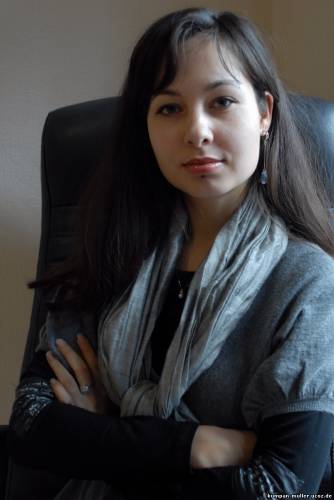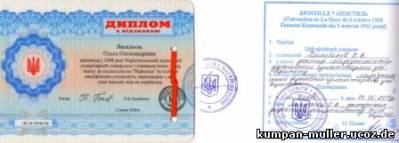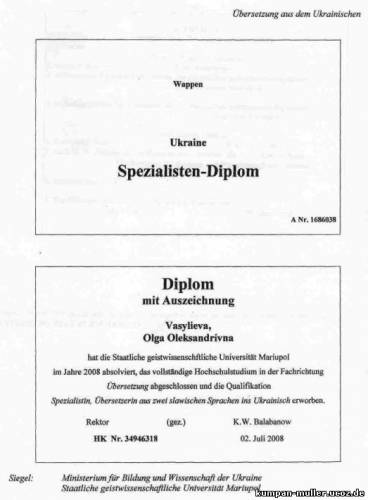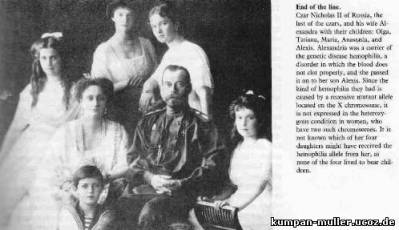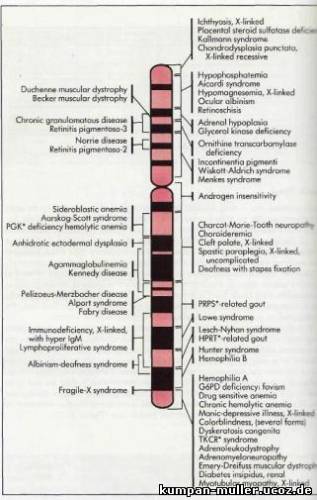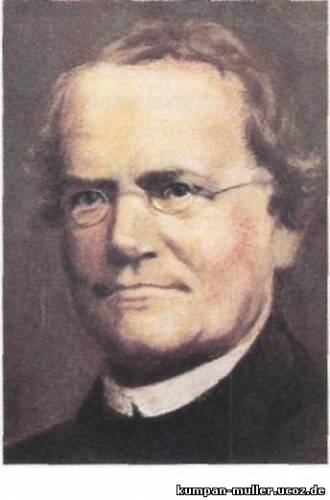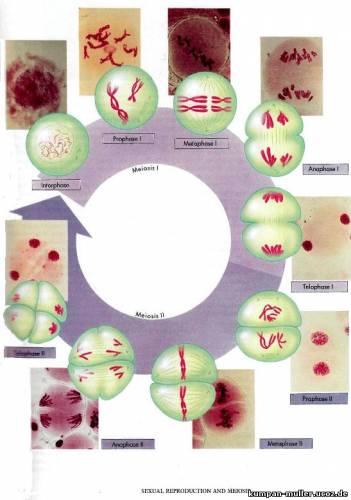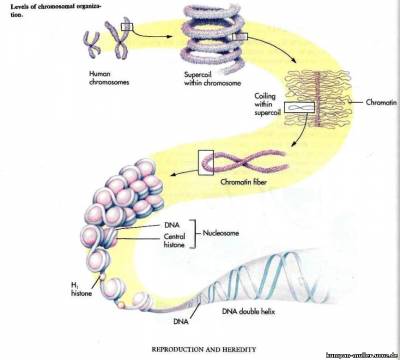Alexander Vasiljev-Muller Dr.econ(PhD)
Publisher
| Главная » Статьи » Law-Preservation-labour / "Все богатство из Труда"(Библия) по Закону Сохранения Труда |
TEXT-ORIGINAL AS DNA : NEW VIEW / Olga Alexandrovna Vasiljeva
TEXT-ORIGINAL AS DNA : NEW VIEW
Translation and attempts of achievement of its adequacy are a difficult process, which finds out new concepts, puts new problems. Self concept "adequacy" was purchased by so much descriptions, that lost the clear determination. In obedience to the last conception, having the determined weight and influence in linguistic circles[1], adequacy began to appear something unattainable, non-existent, by determination without an example, by a task without a decision. Actively developing science of translation-analysis all anymore began to gravitate to exact sciences, aiming to adopt their methods. So, adequacy became something like ideal gas in physics, i.e. by the accepted artificial standard, standard which is not present to nature [2],, but which facilitates calculations. In linguistics, designating the criteria of adequacy of translation, comfortably to characterize and expose to the analysis already really existent texts of translations which in any case will have divergences with an original. A text-original undergoes such structural analysis, to the selection such shallow components of manner and matter, that him just right to compare to Desoxyribonucleic acid (DNA) [3,4,5,6]. In fact really, determination of Desoxyribonucleic acid (DNA) very reminds determination of authorial text-original.
Desoxyribonucleic acid (DNA) - difficult organic chainlet, consisting of hundreds and thousands links, keeping and transmitter from a generation in a generation the inherited information about the structure of all albumens of organism. If to clean specific genetic concepts, determination of text-original will turn out, which serves object for activity of translator. An original is a difficult structure also, also consists of "hundreds and thousands of links" - lexemes, sintagm, making a "chainlet" - ideological maintenance, project and simultaneously its formal expression (because the idea of work is not subject to the disarticulation from a form (all text) in which celled). The words of L.N. Tolstoy are known from a letter to N.N. Strahov: "If I would like to say words all that, that I meant to express a novel, then I must was write the same novel, which I wrote at first". A Text-original also keeps and passes from a generation in a generation the inherited information and is an important both historian – cultural and ideological monument, created author on the court of subsequent generations. How then to present translation in the context of the conducted comparisons and assimilations?
Process of translation as perfect way of adequacy it is possible to compare to achievement, strangely enough, with the synthesis of albumens. Synthesis of albumens it successive, in a few stages process, as a result of which from amino acid a chainlet grows squirrel, corresponding to the primary record on the filament of Desoxyribonucleic acid (DNA). In other words, the synthesis of albumens implies exact, not standing rejections and errors natural process on creation of chainlet of albumens -, information about composition of which is writtenin in Desoxyribonucleic acid (DNA). If Desoxyribonucleic acid (DNA) [7,8,9,10] is text of original (the chainlet of albumens formed in the process of synthesis) - then the ideal text of translation, quite and fully adequate to the original. That characteristically in this comparison, so it that text of original is the transmitter of potential possibilities of its translation (opinion, that every text created in certain language already scented carries in itself the potential variants of its translation, is a not new). Therefore a fact, that in Desoxyribonucleic acid (DNA) information is writtenin about future composition of molecules of albumen, can serve by foundation and proof of the offered conception that in text of original information is already "writtenin" about the future variants of translation. An only difference consists in that the synthesis of albumens foresees a faithful end only, that adequately to creation of "perfect" translation, while in practice have variants - interpretations, "programed" by text of original.
Interestingly, that the successive process of translation also can be compared to the successive process of synthesis of albumen. The synthesis of albumen takes place in two stages: transcription and translation. We will consider each of them. Transcription is translation of information from the successive codons of Desoxyribonucleic acid (DNA) in the sequence of codons informative Ribonucleic acid (mRibonucleic acid) [11,12,13]. A record on mRibonucleic acid in exactness repeats a record on the filament of Desoxyribonucleic acid (DNA). Transferring in the language of linguistics, on the first stage of translation the analogical is created to given imaginary text in language of translation, i.e. in the beginning, consciously or automatically (with of translating experience this process stops to be caught, because occupies very a few of time), a translator passes every unit of translation - exactly lexeme - by a corresponding equivalent. The literal is thus created, i.e. literal translation. The further fate of translation depends on the competense of translator : either to leave translation such (that talks about a subzero competense) or go longer - from the initial level of superficial perception to the deeper study of problem. It is the next, most essential stage.
In the synthesis of albumens it is named translation, that means translation of information from the sequence of codons of mRibonucleic acidin the sequence of amino acid of polypeptid’s chain. A ribosome takes part in this process. Its moves on the molecule of mRibonucleic acid [12,13], reading its "text".
Shifting a situation in the plane of translation-analysis, can mark that translation, in fact, - it the analysis of units of translation and choice of translating transformations. Not second-rate on this stage is a concept "uzus" as following by a vocal norm filter which filters results of the linguistic system on a criterion "more preferably/ less preferably". Uzus is rules of the situation use of linguistic collective. Thus, Uzus can be compared to the ribosome (in genetics), which reads "imaginary" text of translation, created on the first stage, and consistently conducts necessary transformations, answering three requirements of the use, on principle from a preference in the language of translation. On this stage a great number operates of factors, qualificatory the degree of adequacy of translation. Unity of sense and form as the most substantial concepts in translation arrived at by the method of comlomentarnosty (accordances), i.e. the element of form corresponds the element of sense. In an ideal on the second stage absolutely adequate translation is created, that in reality unattainable even because simultaneously there are a few translations of the same sources, called adequate, and it is impossible (example - of proof from opposite, used in geometry). So, the second stage is final and most important, as in her the estimation of language of translation is conducted as express to it and "stranger" culture simultaneously.
We not for free exposed to comparison the stages of process of translation and process of synthesis of albumen. The educed conformities to law interesting enough and No-expect. Humanitarian and exact sciences are drawn together : many laws, for example, of mathematics, operate and in a language. It touches other sciences. That then to talk about repetitive terminology: in linguistics also there are concepts transcription and translation. Likeness of processes, what be going on at gene level, with of translating activity serves as undeniable evidence of both connection of different sciences and science connection with nature. Index, that a theory and practice of translation develops on natural laws is a step to claim of her "viability", inartificiality. Theory and practice of translation it is independent science and has the laws, specific, but not simply taken to the extensive utterances of writers and, on the whole, prominent people of different epochs in relation to the "global" problems of translation, problems of achievement of adequacy.
Literate
1.Sobkov U.V. To the question of the adequate use of transformation there is New philology in translation //. - 2003.- №3(16). -p. 359.
2.Schweizer А.D. Theory of translation : Status, problems, aspects. - М.: Science. 1998. -p. 103.
3. Dahm R (2005). «Friedrich Miescher and the discovery of DNA». Dev Biol 278 (2): 274–88. PMID 15680349.
4. Hershey A, Chase M (1952). «Independent functions of viral protein and nucleic acid in growth of bacteriophage». J Gen Physiol 36 (1): 39–56. PMID 12981234.
5. Watson J, Crick F (1953). «Molecular structure of nucleic acids; a structure for deoxyribose nucleic acid». Nature 171 (4356): 737 – 8. PMID 13054692.
6.The Nobel Prize in Physiology or Medicine 1962 Nobelprize .org Accessed 22 Dec 06
7.Ferguson L, Denny W (1991). «The genetic toxicology of acridines». Mutat Res 258 (2): 123 – 60. PMID 1881402.
8.Jeffrey A. (1985). «DNA modification by chemical carcinogens». Pharmacol Ther 28 (2): 237 – 72. PMID 3936066.
9.Stephens T, Bunde C, Fillmore B (2000). «Mechanism of action in thalidomide teratogenesis». Biochem Pharmacol 59 (12): 1489 – 99. PMID 10799645.
10.Braña M, Cacho M, Gradillas A, de Pascual-Teresa B, Ramos A (2001). «Intercalators as anticancer drugs». Curr Pharm Des 7 (17): 1745 – 80. PMID 11562309.
11.Benham C, Mielke S (2005). «DNA mechanics». Annu Rev Biomed Eng 7: 21–53. PMID 16004565.
12.Champoux J (2001). «DNA topoisomerases: structure, function, and mechanism». Annu Rev Biochem 70: 369–413. PMID 11395412.
13.Wang J (2002). «Cellular roles of DNA topoisomerases: a molecular perspective». Nat Rev Mol Cell Biol 3 (6): 430–40. PMID 12042765.
14.Olga Alexandrovna Vasiljeva, From dissertation of Magister to Dr's Dissertation http://iescr-catholic.ucoz.de/publ/1-1-0-16
15. BIOLOGY Third Edition /George B.Johnson, Peter H.Raven. - Mosby-Year Book, Inc.,1992. - 1217 pp.
Report Olgi Vasiljevoj have took Prime for Original Idea on the Republic's Conference of Ukraine
(Donetsk, 2008)
For Further reading (Gene Technology):
1.Angier, N.: Natural Obsessions - The Search for the Oncogene, Houghton Mifflin
Co., Boston, 1988. An exciting, very readable account of cancer research as it is done today. Highly recommended. The author's science writing won the Pulitzer Prize in 1991.
2.Erlich, H. and others: "Recent Advances in the Polymerase Chain Reaction," Science, June 1991, vol. 252, page 1643-1650. An up-to-date overview of how this exciting new technique is being used in genetic engineering.
3. Hall, S.: "James Watson and the Search for Biology's 'Holy Grail'," Smithsonian, February 1990, pages 41-47. A fascinating and well-written account of the human genome project and the man who heads it up.
4. Hoffman, P.: "The Human Mouse", Discover, August 1989, pages 4, 48-55. To defeat AIDS, an innovative young researcher, using the methods discussed in this chapter, has created remarkable new hybrids of mice and men.
5. Montgomery, G.: "The Ultimate Medicine," Disvocer, March 1990, pages 60-68. An account of how virus vectors are being used in human gene transfer therapy.
6. Mullis, K.: "The Unusual Origin of the Polymerase Chain Reaction," Scientific American, April 1990, pages 56-65. How a critical advance in gene engineering technology was made.
7. Neufeld, P.J. and N.Colman: "When Science Takes the Stand," Scientific American, May 1990, pages 46-53. DNA and other evidence is increasingly being applied to the solution of criminal cases but must be used with caution.
For Further reading (Mutation):
1. Brosius, J.: "Retroposons - Seeds of Evolution," Science, February 1991, vol.251, page 753. A brief description of an exciting new development - the possibility that retrovirus-like transposons are responsible for many introns.
2. Nicolas, A., and others: "An Initiation Site for Meiotic Gene Conversion in Yeast," Nature, vol. 338, March 1989, pages 35-39. The powerful techniques of molecular biology solve a key puzzle, the molecular nature of meiotic crossing over. The evidence favors a double-strand-break and repair mechanism.
3. Patrusky, B.: "DNA on Target: Homologous Recombination," Mosaic, vol. 21, May 1990, pages 44-52. Recombination can be used to replace damaged genes.
For Further reading (Genes an How They Work):
1. Dorit, R., L. Schoenbach, and W. Gilbert: "How Big is the Universe of Exons?", Science, December 1990, vol. 250, pages 1377-1382. A contoversial attempt to guess how many exons are needed to construct all known proteins. A very important first step in addressing this key evolutionary question.
2. Nierhaus, K.: "The Three-site Elongation Model for the Ribosome Elongation Cycle," Biochemistry, May 1990, vol. 29, pages 4997-5007. An exciting suggestion that the ribosome contains an E (exit) site as S and P sites.
3. Todorov, I.: "How Cells Maintain Stability", Scientific American, December 1990, pages 66-75. An account of how cells shut down their protein-making factories in times of stress, and start them back up afterward.
For Further reading (Molecular Genetics):
1. Crick, F.H.C.: "The Discovery of the Double Helix Was a Matter of Selecting the Right Problem and Sticking to It," The Chronicle of Higher Education, October 5, 1988. Francis Crick's own recollections of the hectic days when he and James Watson deduced that the structure of DNA is a double helix.
2. Mullis, K.: "The Unusual Origin of the Polymerase Chain Reaction," Scientific American, April 1990, pages 56-65. A charming account of how a young molecular biologist thought up a key procedure for making unlimited copies of DNA fragments.
3. Watson, J., and others: Molecular Biology of the Gene, ed. 4, Benjamin/Cummings Publishing Co., Menlo Park, California, 1987. The latest edition of a classic of classic text on DNA structure and function.
For Further reading (Human Genetics):
1. Diamond, J.: "Blood, Genes, and Malaria," Natural History, February 1989. A lucid account of the evolutionary history of sickle cell anemia.
From - BIOLOGY Third Edition /George B.Johnson, Peter H.Raven. - Mosby-Year Book, Inc.,1992. - 1217pp. - on the p.259
2. Rensberger, B.: "Creating the Ultimate Map of Our Genes," Science Year 1990, pages 159-171. A very readable account of the human genome project.
3. Watson, R., and J. Lalouel: "Chromosome Mapping with DNA Markers," Scientific American, February, 1988, pages 40-48. An account of how restriction fragment polymorphisms are being used as signposts in developing a detailed map of the human genome. This advance will revolutionize human genetics, as it will for the first time place the 3000 known genetic diseases within reach of the molecular tools for cloning DNA.
For Further reading (Patterns of Inheritance):
1. Corcos, A., and F. Monaghan: "Mendel's Work and Its Rediscovery: A New Perspective," Critical Reviews in Plant Sciences, May 1990, vol. 9(3), pages 197-212. An evaluation of the many myths surrounding Mendel's work.
The human X-chromosome gene map - Photo Gregor Johann Mendel
From - BIOLOGY Third Edition /George B.Johnson, Peter H.Raven. - Mosby-Year Book, Inc.,1992. - 1217pp. - on the p.235 and p.250
2. Mendel, G.,: "Experiments on Plant Hybridization," (1866). Translation, reprinted in C.Stern and E.Sherwood (eds.): The Origins of Genetics: A Mendel Source Book, W.H. Freeman and Co., San Francisco, 1966.
3. Plomin, R. : "The Role of Inheritance in Behavior," Science, April 1990, vol. 185, pages 183-188. Genes affect behavior, but not in simple Mendelian fashion.
For Further reading (Sexual Reproduction and Meiosis):
1. Hamilton, W., R. Axelrod, and R. Tanese: "Sexuel Reproduction as an Adaptation to Resist Parasites," Proceedings of the National Academy of Science, vol. 87, pages 3566-3573, 1990. A new answer to the still-puzzling question of why sex evolved.
From - BIOLOGY Third Edition /George B.Johnson, Peter H.Raven. - Mosby-Year Book, Inc.,1992. - 1217pp. - on the p.225
2. John, B., Meiosis, Cambridge University Press, New York, 1990. A broad survey of meiosis in the plant and animal kingdom, with emphasis on the surprising diversity in how this key form of cell division is carried out.
3. Stahl, F. : "Genetic Recombination," Scientific American, February 1987, pages 90-101. A molecular analysis of the events that take place during crossing-over.
For Further reading (The Cell Cycle: Meiosis):
1.Manuelidis, L.: "A View of Interphase Chromosomes." Science, vol. 250, December, 1990, pages 1533-1540. A review of how chromosomes are organized to express their genes.
From - BIOLOGY Third Edition /George B.Johnson, Peter H.Raven. - Mosby-Year Book, Inc.,1992. - 1217pp. -
on the p.204
2. Moyzis, R. : "The Human Telemere," Scientific American, August 1991, pages 48-55. A unique nucleotide sequence repeated thousands of times forms a protective cap on the ends of chromosomes that protects them from shortening during DNA replication. 3. Murray, A., and Kirschner, M.: "What Controls the Cell Cycle," Scientific American, March 1991, pages 56-63. A modern look at how cell division is controlled. One protein plays a key role in virtually all organisms.
After have read this article I have writen this report:
Источник: http://azov-academy.ucoz.org/publ/tekst_original_kak_dnk_novyj_vzgljad_o_a_vasileva/4-1-0-148 | |
Категория: Law-Preservation-labour / "Все богатство из Труда"(Библия) по Закону Сохранения Труда | Добавил: Vasiljev (2011-07-17)
| Автор: Olga Alexandrovna Vasiljeva  
| |
| Просмотров: 3063 | Теги: | Рейтинг: 5.0/3 | |
| Всего комментариев: 2 | |||
| |||
Приветствую Вас Гость
Форма входа |
|---|
Категории раздела | |||||||
|---|---|---|---|---|---|---|---|
|
Поиск |
|---|
Наш опрос |
|---|
Статистика |
|---|
Онлайн всего: 1 Гостей: 1 Пользователей: 0 |
Друзья сайта |
|---|
|
|
